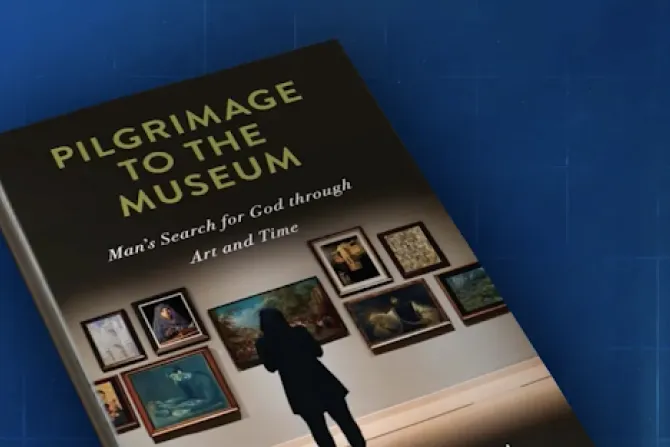Washington, D.C. Newsroom, Dec 10, 2022 / 06:30 am
For millennia, the arts have served as a medium through which mankind can illustrate the contours of the human experience. The arts have such an important role in Church history that St. John Paul II even released a letter in 1999 detailing the importance that artists have in the eyes of God.
With this in mind, EWTN News In Depth’s Montse Alvarado recently spoke with Stephen Auth, the author of a new book, “Pilgrimage to the Museum: Man’s Search for God through Art and Time” (Sophia Institute Press, 2022) about this very quality.
Auth explained how art augments the journey to holiness and figured prominently in his own path back to the Catholic faith.
“I think one of the things that makes the book attractive to people is [that] it’s written by a broken vessel,” Auth said. “I grew up as an altar boy [in a] very Catholic family, but by the time I [finished college] at Princeton, I was at best an indifferent agnostic.”
Auth said his journey back into the faith slowly began to take shape through his marriage to his wife, who was a devout Catholic. However, that early journey arguably took its biggest leap forward when he had a near-death experience.
“[A priest] came up to give me last rites and my first confession in 25 years,” Auth explained. “When we got done with that, he said, ‘Steve, you know, you’re a guy with a lot of talents and your big problem right now is that you’ve been using them for yourself and not for God’ … and I resolved [that] if I survived, I was going to turn my talents and use them for God.”
This promise led Auth to his missionary work on the streets of New York and this second mission of taking people through the Metropolitan Museum of Art — falling in line with his background in art history.
It was in the midst of this second mission that Auth became inspired to present a more God-centric view of art for viewers, as opposed to one purely based on a classical art historian’s point of view that “sanitizes” the paintings when taken in isolation.
“[It’s] a good place to start, but you need to have God in the conversation,” Auth explained. “And we decided to take a look at art from the perspective of God being there — the image of beauty that he places in our soul, the image of himself — and we just redid the entire tour and it became a pilgrimage.”
Additionally, while some may be surprised to know that Auth chose art that isn’t necessarily religious, he ultimately views this as a way for people to appreciate how humanity is always searching for God, even when we don’t realize it. This view, in Auth’s experience, is something that gradually comes to light for participants of the pilgrimage.
“At first, they’re a little suspicious,” Auth said. “But as [they] start to go through and [they] see … these [artistic] themes occur and recur over thousands of years, with different artists, in different periods of time … [they] begin to say, ‘Wait a second here, there’s something greater at work.’”
As for how his work falls in line with the Church’s own rich tradition with the arts, Auth argued that one can appreciate those artistic patterns within religious art as well.
“I always felt like the churches were built to show the miracle of the Mass,” Auth said. “This is where God comes to us through the Eucharist; and all the beauty of [the churches] and the paintings were designed to help us understand that this is God, this is God’s beauty.”
Watch the full interview below.
(Story continues below)



